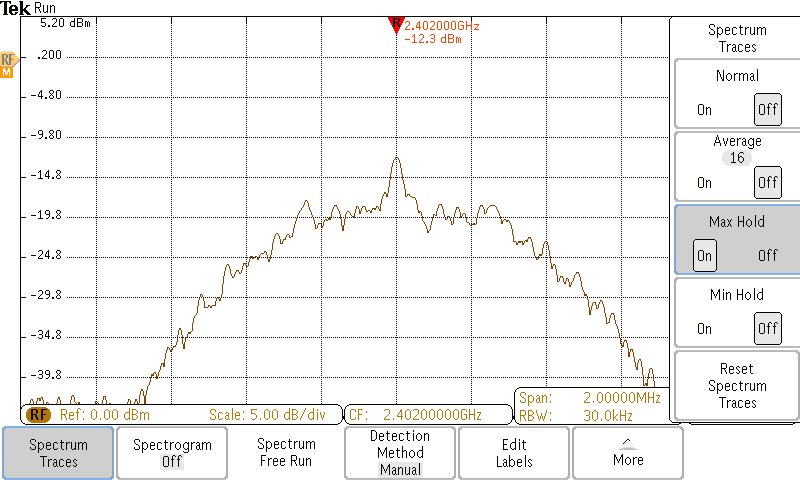Our setup:
Custom board with CC2640 as a sleepy end advertise only beacon. 1Hz xmit rate. Battery powered. Not using 32K crystal to save space. We have a bosh BMI sensor detecting ACCEL via SPI bus
EV06 board with CC2640 daughter board loaded up. 32K crystal removed to mimic above hardware platform. No BMI sensor used here, so data isn't gathered.
Advertisement only scheme, packing data in the spare space of the advertise message.
Laptop with two BLE sniffers (TI USB sniffer and https://www.adafruit.com/product/2269 set up as a sniffers feeding into wireshark)
Observations:
We run each board through a 5 minute set and record the RSSI, packet receipt count and time between packets to quantify the "health" of the transmitter. Proximity is close (< 3ft)
We count 1 packet received on one channel as a success as to avoid double or triple counting.
Results:
When detecting using the TI USB sniffer, we see results across both boards are within a reasonable tolerance of each other (given our less than sterile environment). No gaps longer than 2 seconds, consistent RSSI, 90% return rate. Occasional CRC error, maybe 1 in 40. No other anomalous behavior
When detecting with the https://www.adafruit.com/product/2269 sniffer during the same window, the TI demo board performs as described above. Our custom board however throws errors at a prodigious rate. Unknown and corrupted packets, packet receipt gaps of up to 10-15 seconds. Packet receipt rate returns between 10-30% with a high amount of variation test to test.
This behavior is repeatable both when tests are running concurrently and consecutively (with the exception of the variability of the packet receipt rate described above)
This behavior has also been noted when using tablets and cell phones and NRF connect, BLE sniffer or other BLE applications. However, when sniffing with TI hardware we seem to have no such issue. Samsung galaxy S2 tablet, Tab A, Samsung S6, Panasonic A2 toughbook and a few lenovos. The demo board is seen regularly, custom board is spotty and performs poorly.
Is there some reason why TI hardware would just be "better" at detecting our advertisements where non-TI chip sets would suffer?



